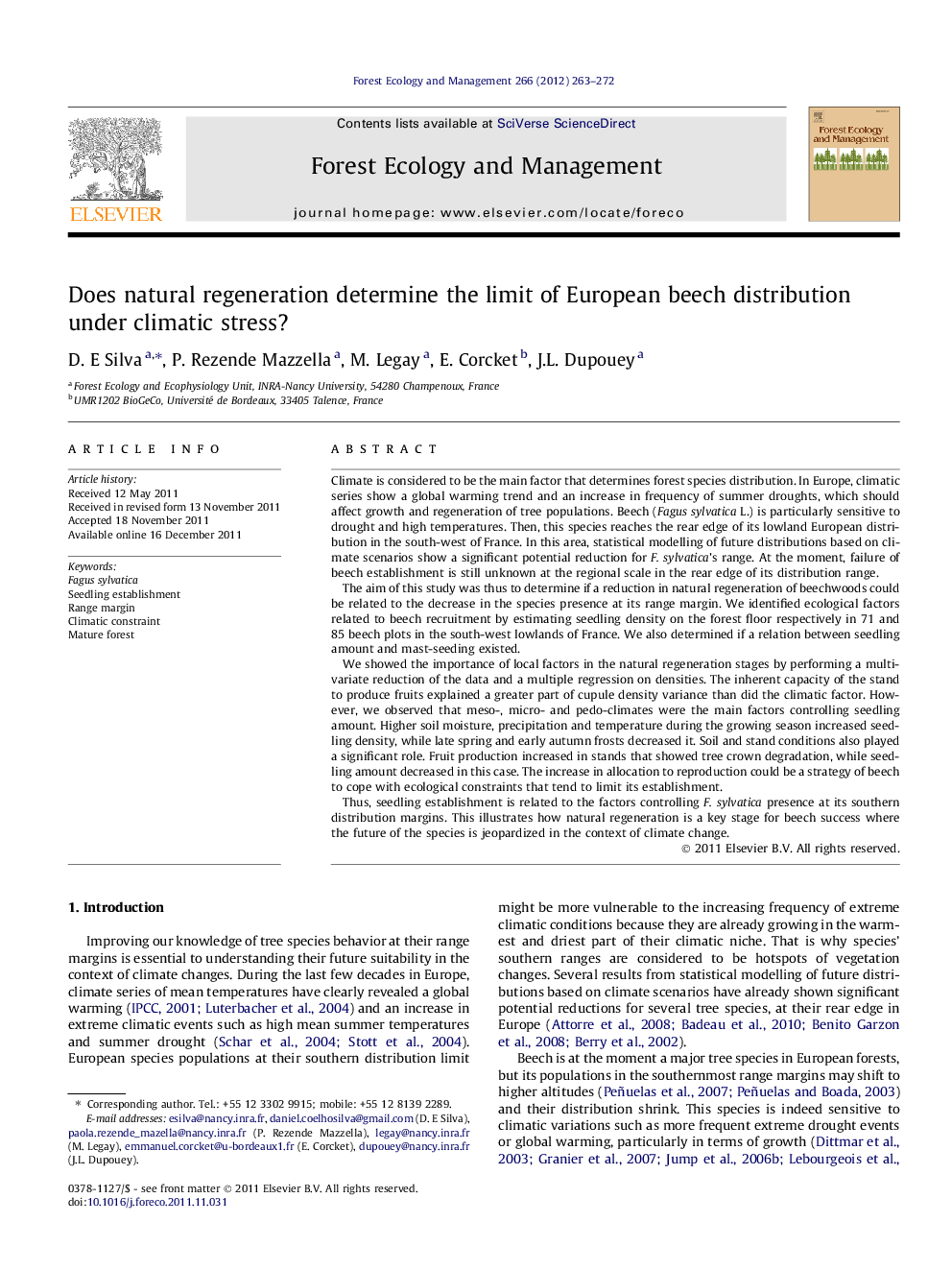| کد مقاله | کد نشریه | سال انتشار | مقاله انگلیسی | نسخه تمام متن |
|---|---|---|---|---|
| 87722 | 159263 | 2012 | 10 صفحه PDF | دانلود رایگان |

Climate is considered to be the main factor that determines forest species distribution. In Europe, climatic series show a global warming trend and an increase in frequency of summer droughts, which should affect growth and regeneration of tree populations. Beech (Fagus sylvatica L.) is particularly sensitive to drought and high temperatures. Then, this species reaches the rear edge of its lowland European distribution in the south-west of France. In this area, statistical modelling of future distributions based on climate scenarios show a significant potential reduction for F. sylvatica’s range. At the moment, failure of beech establishment is still unknown at the regional scale in the rear edge of its distribution range.The aim of this study was thus to determine if a reduction in natural regeneration of beechwoods could be related to the decrease in the species presence at its range margin. We identified ecological factors related to beech recruitment by estimating seedling density on the forest floor respectively in 71 and 85 beech plots in the south-west lowlands of France. We also determined if a relation between seedling amount and mast-seeding existed.We showed the importance of local factors in the natural regeneration stages by performing a multivariate reduction of the data and a multiple regression on densities. The inherent capacity of the stand to produce fruits explained a greater part of cupule density variance than did the climatic factor. However, we observed that meso-, micro- and pedo-climates were the main factors controlling seedling amount. Higher soil moisture, precipitation and temperature during the growing season increased seedling density, while late spring and early autumn frosts decreased it. Soil and stand conditions also played a significant role. Fruit production increased in stands that showed tree crown degradation, while seedling amount decreased in this case. The increase in allocation to reproduction could be a strategy of beech to cope with ecological constraints that tend to limit its establishment.Thus, seedling establishment is related to the factors controlling F. sylvatica presence at its southern distribution margins. This illustrates how natural regeneration is a key stage for beech success where the future of the species is jeopardized in the context of climate change.
► Establishment failure of beech was studied at its south-western European margin.
► Spatial variations in seedling density were measured in 85 populations.
► Seedling density was mainly controlled by climate and decreased in declining stands.
► Light increased the density.
► Natural regeneration can be determinant to the success of beech at its range margins.
Journal: Forest Ecology and Management - Volume 266, 15 February 2012, Pages 263–272